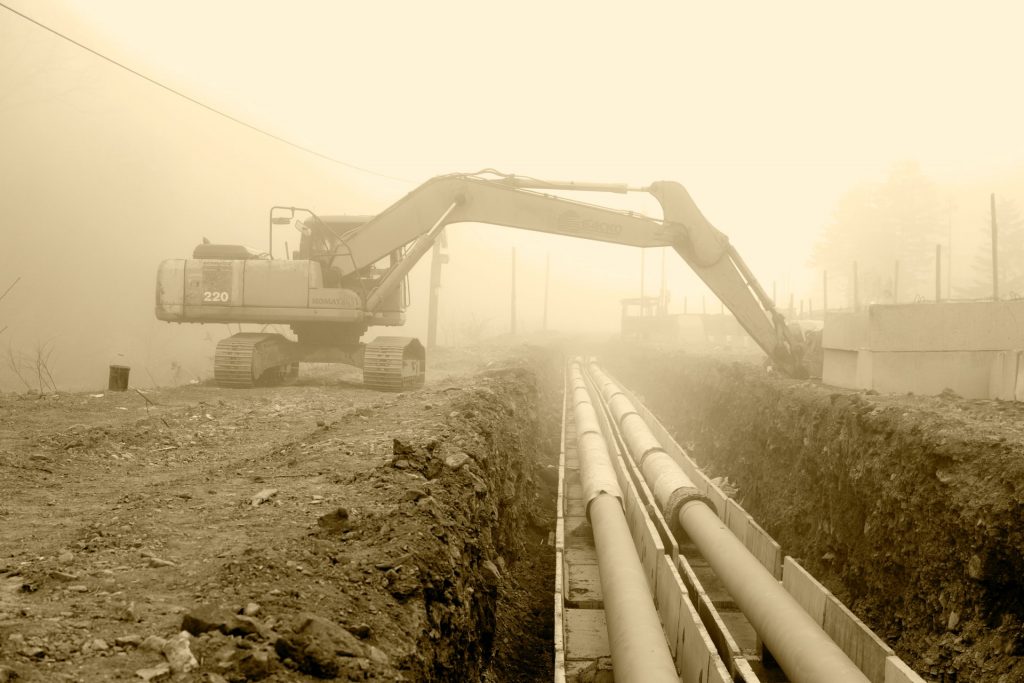Republicans on Fox News and elsewhere have called for reviving the Keystone XL pipeline, which if completed would run 1,200 miles from Alberta, Canada to the Gulf Coast, in response to soaring gas prices following Russia’s invasion of Ukraine. Conservatives are using the present crisis to lambaste Biden’s decision last year to revoke Keystone XL’s permit, and his climate plans generally. Keystone may become a convenient symbol for the Right only because, following Biden’s new ban on US imports of Russian oil, the US needs to find a substitute for the 700,000 barrels per day that it previously purchased from Russia. But Keystone would have had virtually no effect on gas prices even if it could have been shipping oil tomorrow.
It’s important to note that this is purely hypothetical, because Keystone XL is very much dead. This January, a federal judge threw out red states’ lawsuit against Biden’s revocation of the Keystone permit because TC Energy (formerly TransCanada), the Canadian company responsible for the pipeline, has permanently cancelled any plans to build it. Quoting a report filed by the company, the judge for the Southern District of Texas stated that “no President would ever be able to issue another permit for the Keystone XL project—because it ‘no longer exists’.” But even if some version of a pipeline delivering shale from Alberta received a permit tomorrow, there are two reasons why this decision would not meaningfully reduce gas prices in the short or long term.
1. Timing
When TC Energy announced in March 2020 that it was resuming construction of the Keystone XL pipeline, they estimated that it would “enter service in 2023.” By this projection, if construction resumed tomorrow, Keystone wouldn’t be online until 2025. When Biden revoked the permit on January 20, 2021, TC Energy completed just over 90 miles of a pipeline supposed to extend across 1,200 miles. Considering this construction history and the inevitable lawsuits the pipeline would have faced again, completion in three years might be wishful thinking.
This is one great example of how, according to economist James Hamilton, “long lead times” for new sources of oil and gas limit the “short-run price elasticity of oil supply” (the extent to which production is capable of picking up in response to higher prices). Although a greater amount of spare production capacity could have alleviated price increases, the COVID-19 pandemic depressed demand and drove fossil fuel companies into debt, which discouraged them from increasing output. During the present war in Ukraine, OPEC has stuck by its agreement from last year to limit oil production, in order to keep prices high enough to recover from pandemic-induced financial losses. Reviving the Keystone pipeline would be irrelevant to the global market, not only for this reason but also because of its minimal scale.
2. Scale
In the same announcement, the company estimated that Keystone would have carried 830,000 barrels of crude oil per day. This is just above the 700,000 barrels that the US imported from Russia before the recent ban. However, the price of oil (and subsequently, gasoline) is affected by the world market, not the barrel math for one country. Russia exports about 7 million barrels of oil per day to the world. Keystone, which was always intended as an “export pipeline” rather than a domestic wellspring, would at best have produced “less than one-tenth of Russian oil exports,” according to James Glynn from Columbia University’s Center on Global Energy Policy. Keystone is a drop in the bucket, which would not materially offset the world’s need for Russian oil or the effect of Russia’s invasion on prices.
The Right’s insistence on restoring the Keystone XL pipeline simply ignores the reality of how long it would take and how little oil it would produce. In the long run, achieving 100% clean energy in the United States — e.g. by importing hydroelectricity from Quebec, something the US is currently blocking — would do the most to insulate consumers from oil price shocks caused by senseless war.

